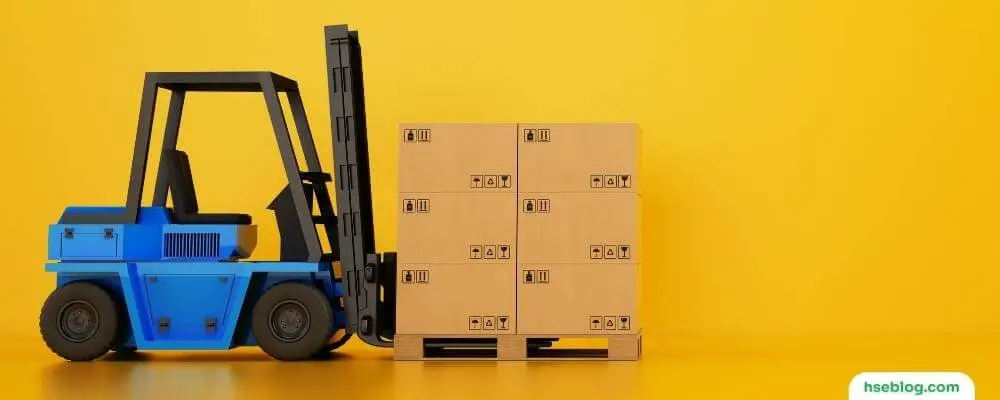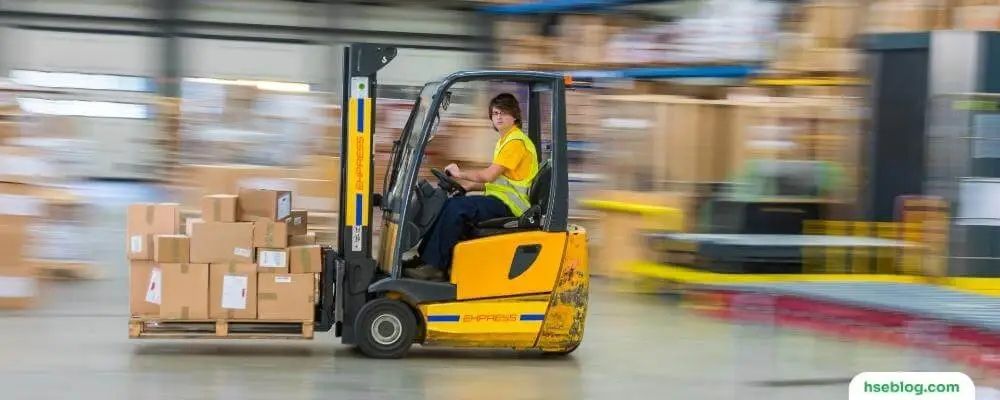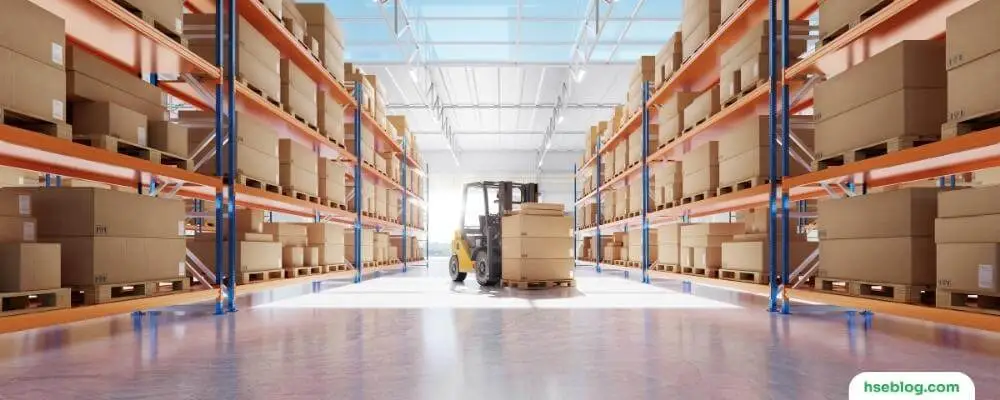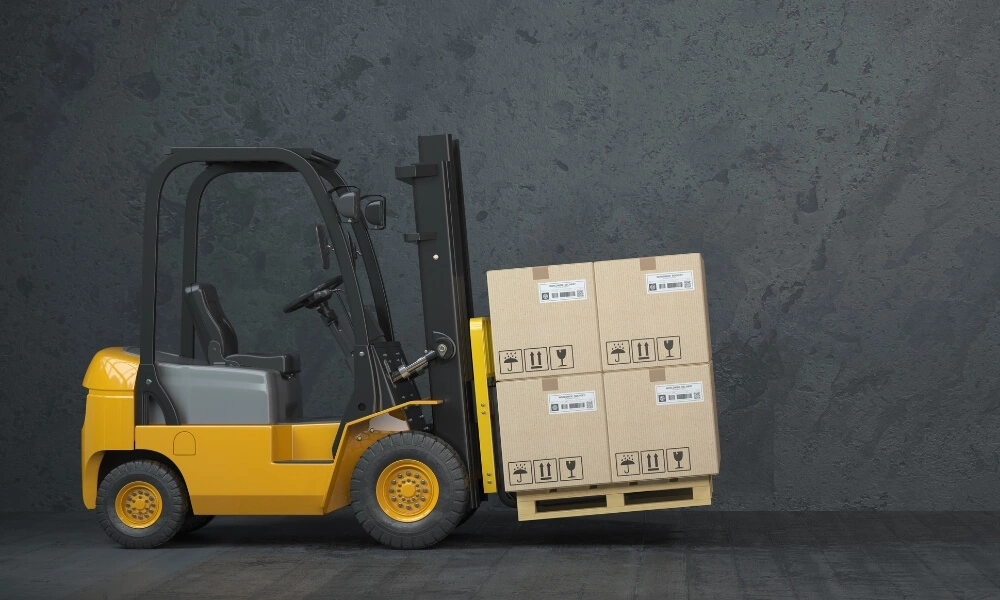In the fast-paced and demanding world of material handling and warehousing, forklifts are the workhorses that keep operations running smoothly. However, with the immense capabilities of these machines comes an equally significant responsibility for safety. Forklifts, if not operated with caution and respect for their power, can be involved in accidents with devastating consequences. This makes it imperative to understand and utilize the various safety features incorporated in these vehicles.
In this insightful blog post, we delve into the critical components that enhance the safety and efficiency of forklift operations. From the essential load backrests and overhead guards to the intricate mast assembly, along with a plethora of additional features such as tilt cylinders and load sensing systems, we will unpack the functionalities and significance of each feature. Whether you are an experienced forklift operator, a safety supervisor, or someone new to material handling, this article is your comprehensive guide to safety features.
Forklift Safety Features | Guards, Backrest, Mast, And More
Forklifts are powerful industrial vehicles commonly used in warehouses, construction sites, and manufacturing facilities for lifting and transporting heavy loads. To ensure the safety of operators and prevent accidents, forklifts are equipped with various safety features. Here are some of the key safety features found in forklifts:
1. Forklift Load Backrests
Forklift load backrests are integral safety attachments that stabilize and secure cargo during transport and lifting operations. Comprising a sturdy, typically steel, frame that extends vertically from the forklift’s carriage, the backrest is a barrier that prevents cargo from tipping or falling backward, particularly during abrupt movements like sudden stops or turns. This is invaluable for the operator’s safety, especially when dealing with precarious or unevenly stacked loads, as it minimizes the risk of cargo falling onto the driver’s cabin.
Beyond enhancing safety, load backrests contribute to operational efficiency and cost-effectiveness. Backrests facilitate the secure stacking of higher loads by providing a flat surface against which loads can rest, which is vital in optimizing storage space. Furthermore, as a shield for the fork carriage, it absorbs some of the stresses and impacts associated with handling heavy loads, thereby reducing wear and tear on the carriage itself. This, in turn, mitigates the need for frequent carriage replacements, rendering the use of load backrests a more economical option in the long run.

2. Forklift Overhead Guard
Forklift overhead guards are fundamental safety components that shield operators from falling objects and debris. These structures, usually made of steel or robust material, are mounted above the operator’s cabin. Overhead guards are mandated for forklift classes I, II, IV, and V under the Falling Object Protective (FOP) standards. At the same time, Class VII rough terrain forklifts with side operator cabs must also comply with Roll Over Protective (ROP) standards. Although crucial for safety, it’s imperative to recognize that overhead guards are not built to withstand the full impact of a maximum capacity load falling from a significant height.
The design of overhead guards often incorporates a “crush and deflect” mechanism. When a heavy object falls onto the guard, the leg receiving the most impact is engineered to crumple and channel the load laterally, deflecting it to one side. This reduces the force exerted directly downwards and offers protection to the operator. While overhead guards can efficiently safeguard against smaller or partial loads, the “crush and deflect” feature ensures that the operator is still granted a degree of protection even in the event of larger objects falling. In environments where loads are habitually elevated or stacked high, overhead guards are indispensable in minimizing the risk of injuries due to falling objects.
3. Forklift Mast
The upright forklift mast is the vertical assembly that is pivotal in lifting, lowering, and positioning loads. This mechanical component is essentially the backbone of the forklift’s primary function. A typical mast is constructed using an intricate system of channels and interlocking rails, along with chains and hydraulic cylinders, which facilitate the smooth and controlled movement of the forks. The hydraulic cylinders are responsible for lifting and lowering the carriage, while the chains work in tandem to ensure the stability and alignment of the load as it moves vertically.
4. Forklift Seat Belts
Forklift seat belts are indispensable safety devices designed to secure the operator firmly in their seat, especially during events like tip-overs – one of the prevalent forklift accidents. By keeping the operator within the confines of the cabin, which is safeguarded by the overhead guard and counterweight, seat belts significantly diminish the likelihood of ejection and, consequently, severe injuries. Considering the dynamic nature of forklift operations, which often involves abrupt movements and handling heavy loads, the seat belt’s role in anchoring the operator cannot be understated, making it a critical component in forklift safety.
5. Load Capacity Data Plate
The Load Capacity Data Plate is an essential safety plaque affixed to forklifts, offering vital information regarding the vehicle’s maximum safe lifting capacity. It accounts for the load center and lift height variables, directly impacting the forklift’s stability. Overloading a forklift can precipitate tip-overs or loss of control, making adherence to the Load Capacity Data Plate specifications crucial for maintaining operational safety and preventing accidents attributable to load imbalances or excessive weights.
6. Forklift Horns and Lights:
Forklifts are equipped with horns and lights as standard safety features. The horn helps alert pedestrians or other forklifts of the vehicle’s presence, especially in areas with low visibility. Similarly, lights – including headlights, tail lights, and warning lights – improve visibility in various operating conditions and help signal the forklift’s actions, such as reversing or braking.

7. Operator Presence System:
This system ensures that the forklift only operates when the driver is in the seat and properly operating the controls. Suppose the operator leaves the seat without setting the parking brake or lowering the forks. In that case, the system automatically neutralizes the drive and hydraulic functions, preventing the forklift from moving or lifting loads.
8. Side Mirrors and Rearview Cameras
Side mirrors and rearview cameras are instrumental in augmenting visibility for forklift operators, particularly in constricted or busy environments. Given the limited direct line of sight and the bulky nature of forklifts, these devices are pivotal in providing a clear view of the surroundings, especially behind the vehicle. By enabling the operator to monitor blind spots and perceive obstructions or personnel in close proximity, side mirrors and rearview cameras substantially mitigate the risk of collisions and accidents, thus enhancing safety and operational efficiency.
9. Tilt Cylinders
Tilt cylinders are hydraulic components that empower the operator to modify the angle of the forklift’s mast and forks concerning the ground. Adjusting the tilt allows the operator to ensure the load is snugly seated and balanced on the forks. This is particularly crucial when handling uneven or bulky items, as it minimizes the likelihood of the load slipping or toppling off the forks. Essentially, tilt cylinders enhance control over load handling, contributing significantly to the safety and efficiency of forklift operations.
10. Load Sensing System
The Load Sensing System is an advanced safety feature that continuously monitors the weight of the cargo on the forklift’s forks. By detecting the load’s weight in real time, the system can prevent the forklift from hoisting loads surpassing its maximum rated capacity. This is paramount in averting tip-overs, which can result from an imbalanced or excessive load, and preventing structural damage to the forklift. The Load Sensing System acts as a vigilant guardian, ensuring that the forklift operates within its safe loading parameters.

Additional Forklift Safety Features
- Anti-Slip Surfaces: The forklift’s floor and pedals should have anti-slip surfaces. This prevents the operator’s feet from slipping, especially in wet conditions, and ensures they always have proper control over the vehicle.
- Emergency Stop Button: An easily accessible emergency stop button lets the operator quickly shut down the forklift in an emergency. This can prevent accidents and injuries in situations where quick action is necessary.
- Blue Safety Lights: These are lights mounted on the back of the forklift that project a blue spot onto the floor a few meters behind the vehicle. This serves as a warning for pedestrians that a forklift is backing up or approaching, particularly in noisy environments where the forklift may not be heard.
- Fire Extinguisher: A fire extinguisher mounted within reach of the operator can be a lifesaver. Forklifts, especially those that run on internal combustion engines, can sometimes catch fire, and having an extinguisher readily available is essential.
- Rain Covers and Cabs: For forklifts that are operated outdoors, rain covers and cabs are important safety features. They protect the operator from the elements, ensuring they can see clearly and operate the machine safely in various weather conditions.
- Lateral Stability Control System: This system monitors the forklift’s stability and automatically reduces the risk of a lateral tip-over by limiting certain functions (like turning speed) if the vehicle is at risk of tipping over to the side.
- Mast Lock System: When the operator leaves the seat, this system locks the mast’s vertical movement and the carriage’s tilting movement, preventing any unintended movement that could be dangerous.
- Fork Leveling System: This feature assists operators in horizontally leveling the forks, which is essential when placing loads on high shelves or racking. It helps prevent misalignment that can lead to accidents or damage to products.
Notably, forklift safety depends heavily on operator training, awareness, and adherence to standard operating procedures. Regular maintenance and checks ensure all these safety features function properly.
Conclusion
In conclusion, the safety features of forklifts, such as guards, load backrests, masts, and many others, are indispensable for ensuring the operators’ protection and efficiency and longevity of the equipment. Being cognizant of these features and their proper utilization can significantly mitigate the risk of accidents and injuries. Investing time in training and familiarizing operators with these safety components, coupled with regular maintenance, is an invaluable practice for any enterprise engaged in material handling, underlining a commitment to safety, productivity, and excellence.

